After a visit to Facebook I want to establish a new phrase for the English language: open-pit coding (see “open-pit mining“).
The current Silicon Valley best practice seems to be a big room filled with desks and chairs. There are not private offices. There are no cubicles. There are few dividers of any kind. At least for Facebook, this cannot be because it is cheap. They hired Frank Gehry to build a space that is essentially an aircraft hangar with cafeterias both ends. If they cared about cost they would have hired a hangar company to build it.
Here are some snapshots from the Facebook campus. Note the Burning Man play structure in the roof garden. Also note that it is impossible to walk more than about three minutes without passing either a smoothie bar, a kitchen stocked full of snacks, or a full-fledged restaurant. Our lunch began with a rooftop smoothie and continued indoors with dim sum. We then walked to the other end of the big new building for the salad bar. Ribs at the BBQ shack were next. Finally there was the ice cream parlor and bakery. “We had lunch in five restaurants,” I explained later to friends. Donald Trump said in the first debate, regarding who might have had sufficient computer skills to crack into an email server, that “It also could be somebody sitting on their bed that weighs 400 pounds, OK?” I wonder if the Silicon Valley leaders are creating factories for these 400-lb. software and system experts.
As far as decor goes, Facebook has an in-house poster-printing facility whose output adorns most walls. Although I don’t recall seeing any black employees, “Black Lives Matter” posters are prominent and sometimes dominant. The only posterable wall that I found without a Black Lives Matter poster was one (pictured below) that celebrates same-sex marriage.
Readers: What do you think about the open-pit coding office design? Can this be the way to get the best work out of people? Is the reason the ease of collaboration? Or the fact that people whose screens are exposed to the rest of the team won’t get sucked into non-work-related Internet activities (e.g., signalling virtue by denouncing Donald Trump on Facebook).
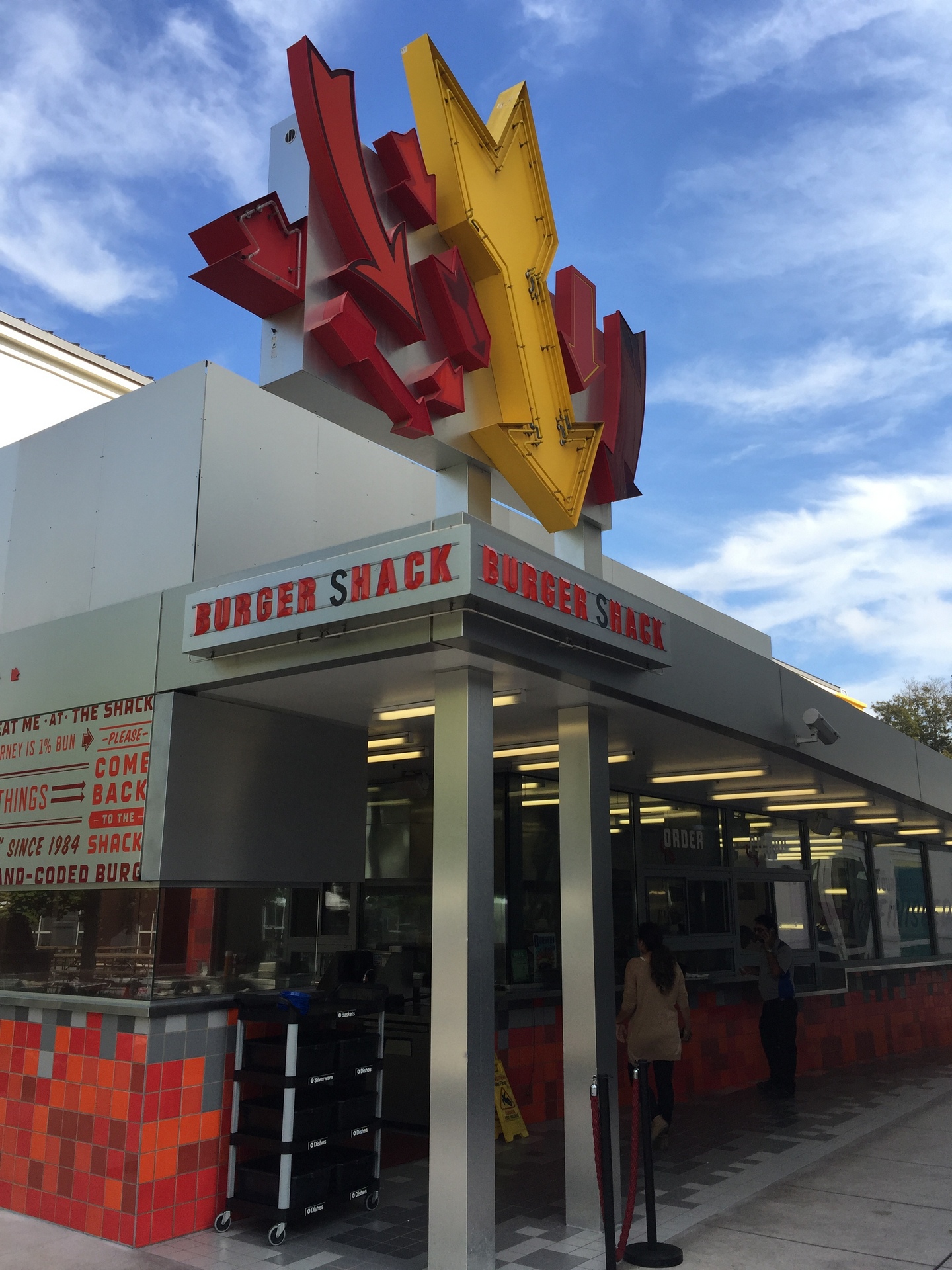

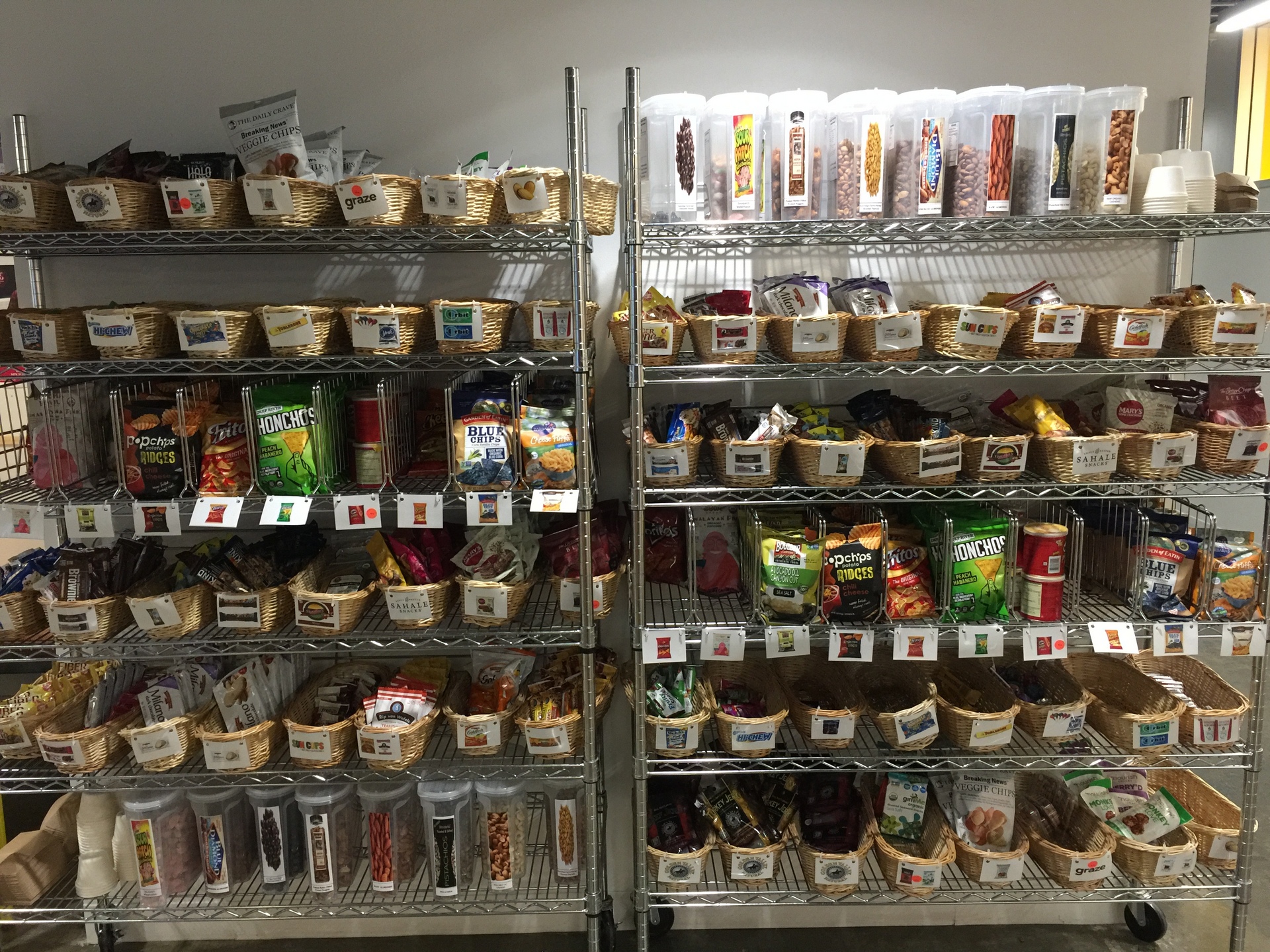
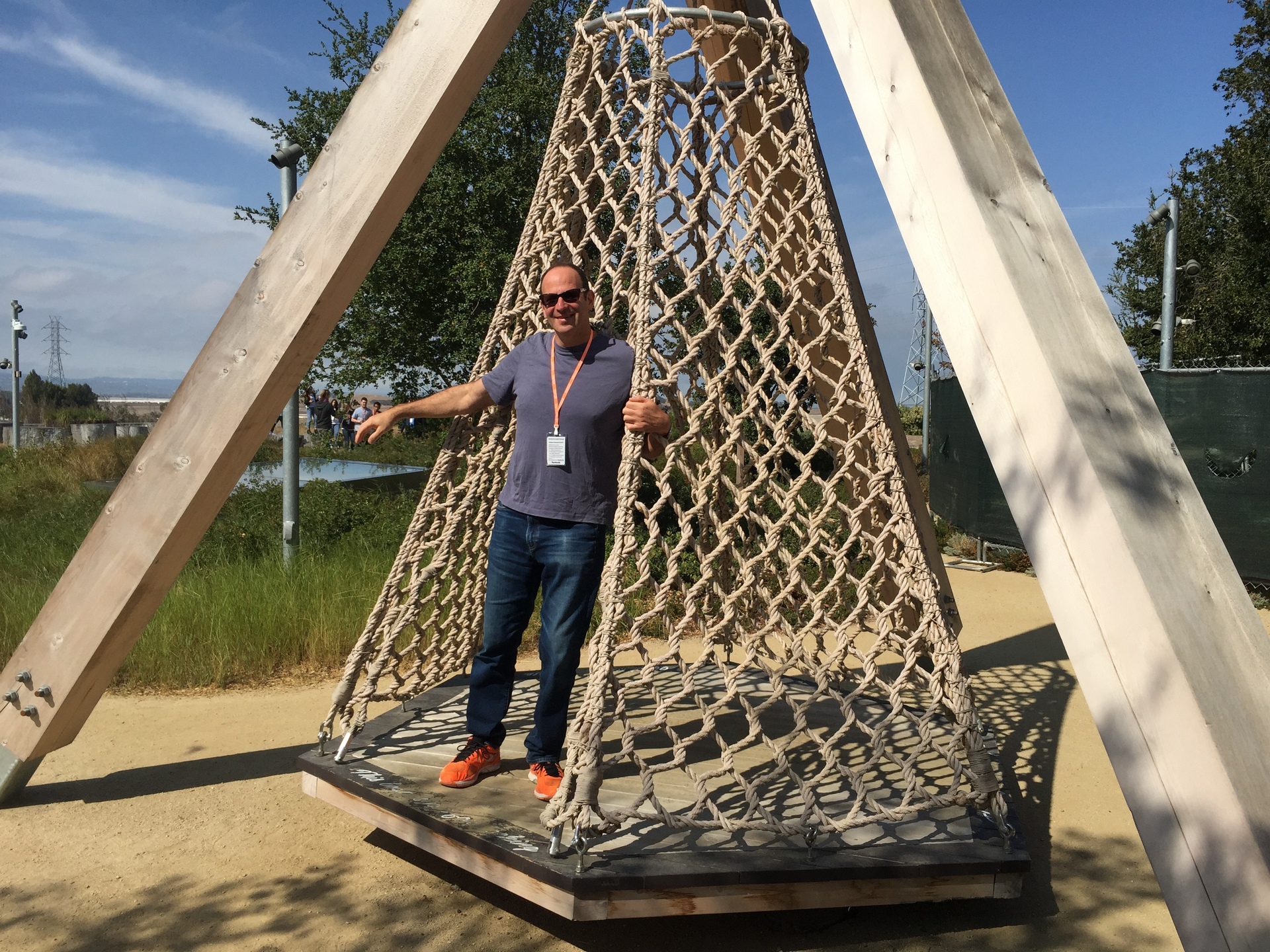
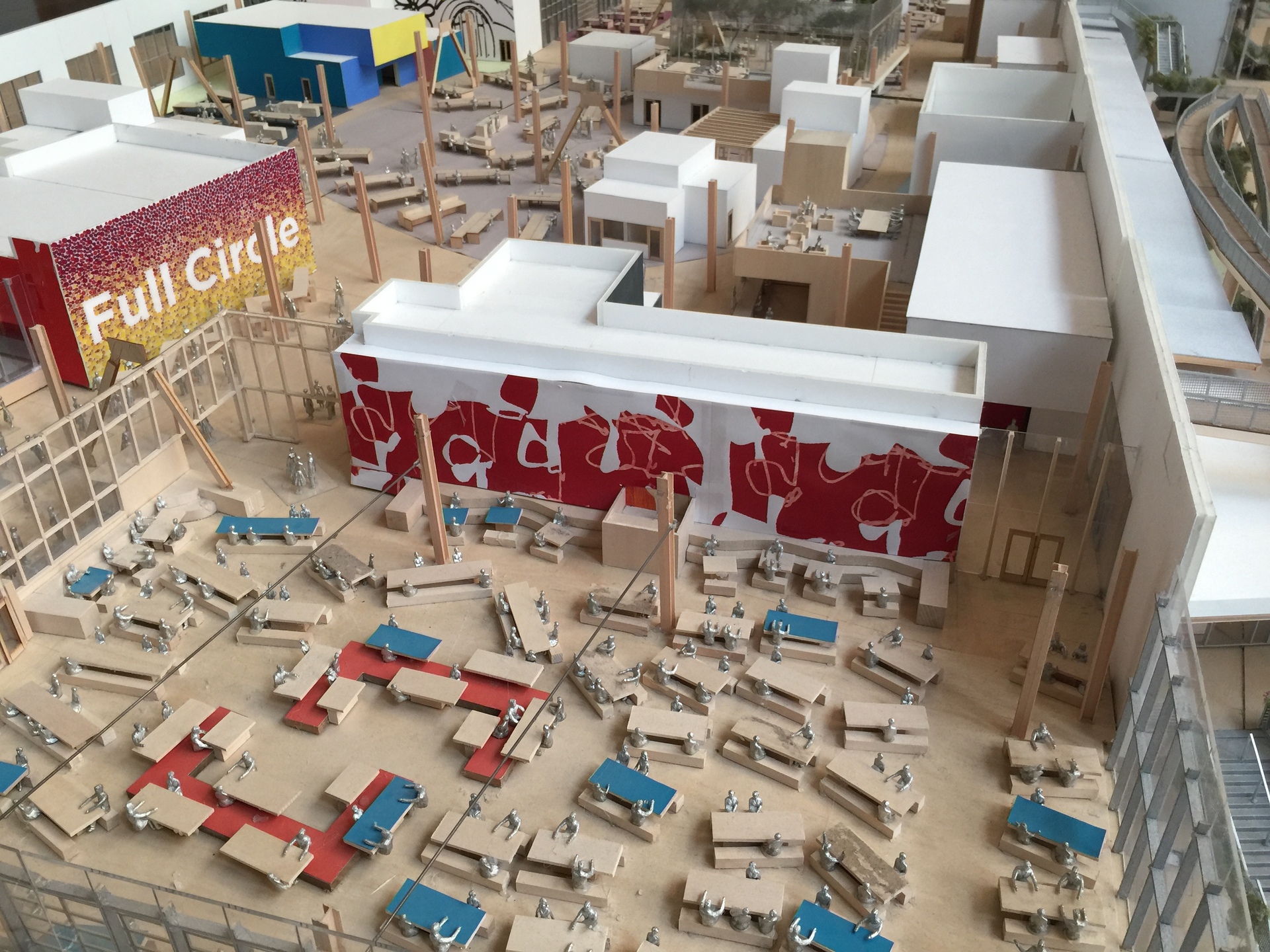
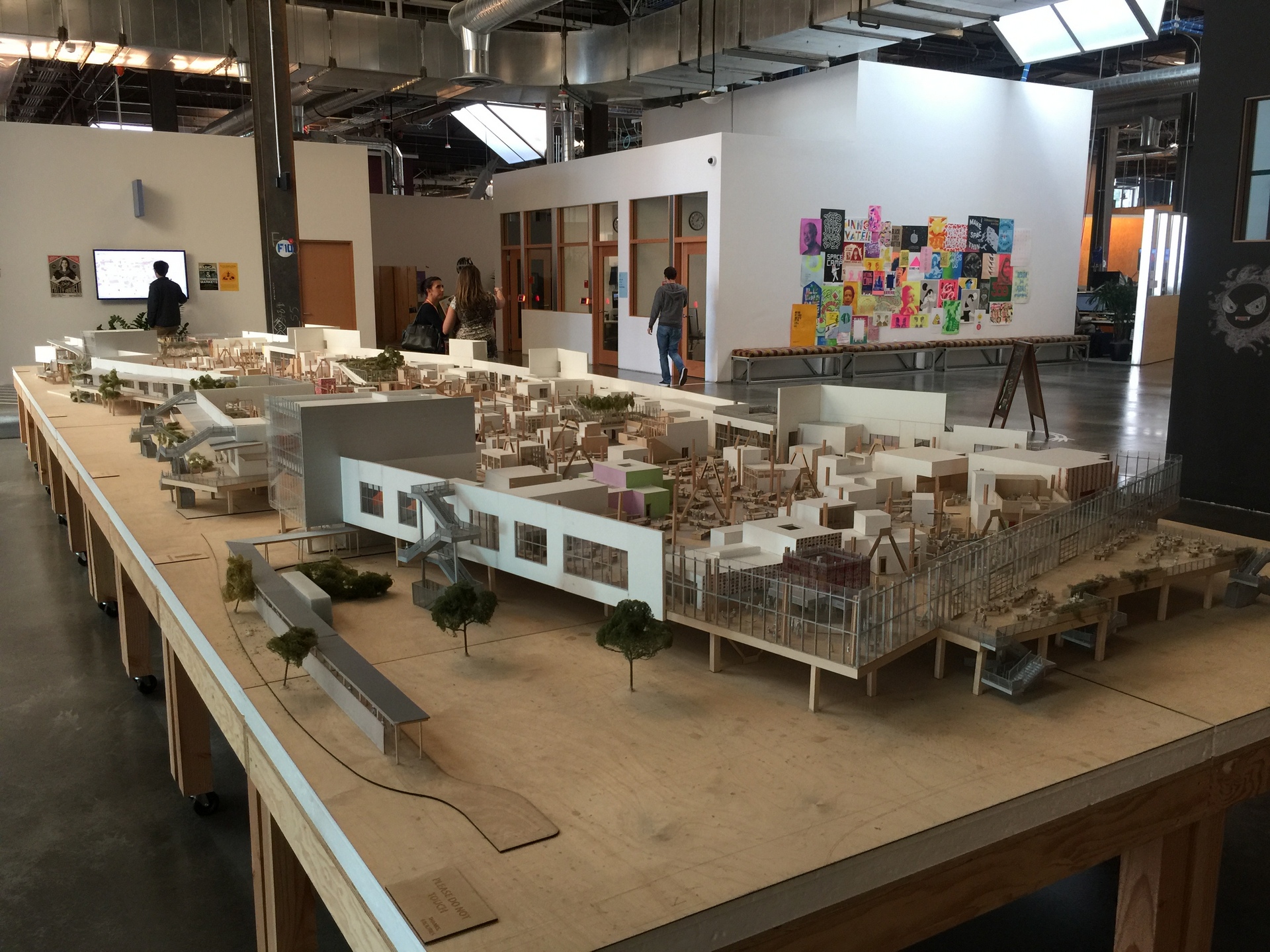
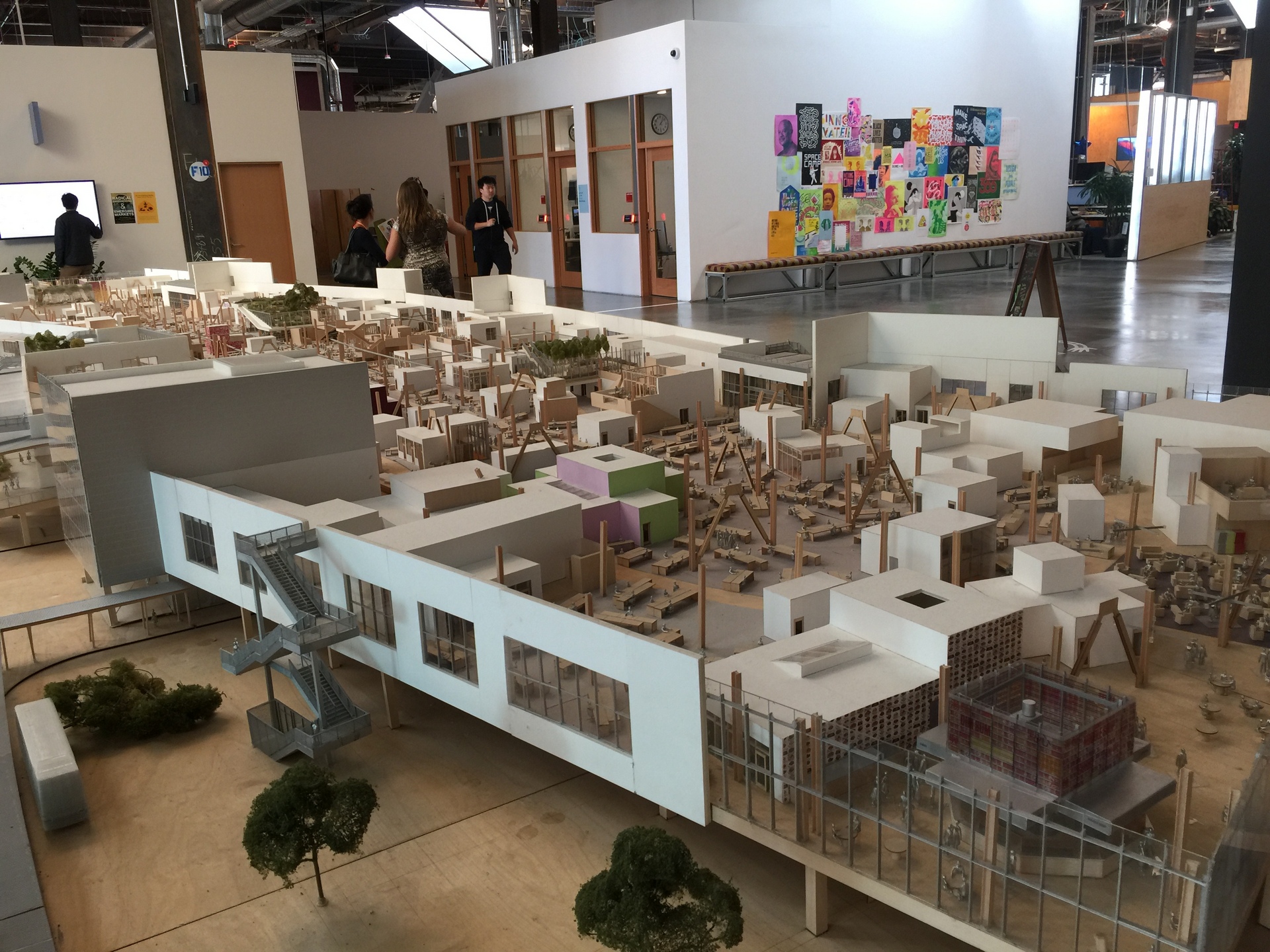
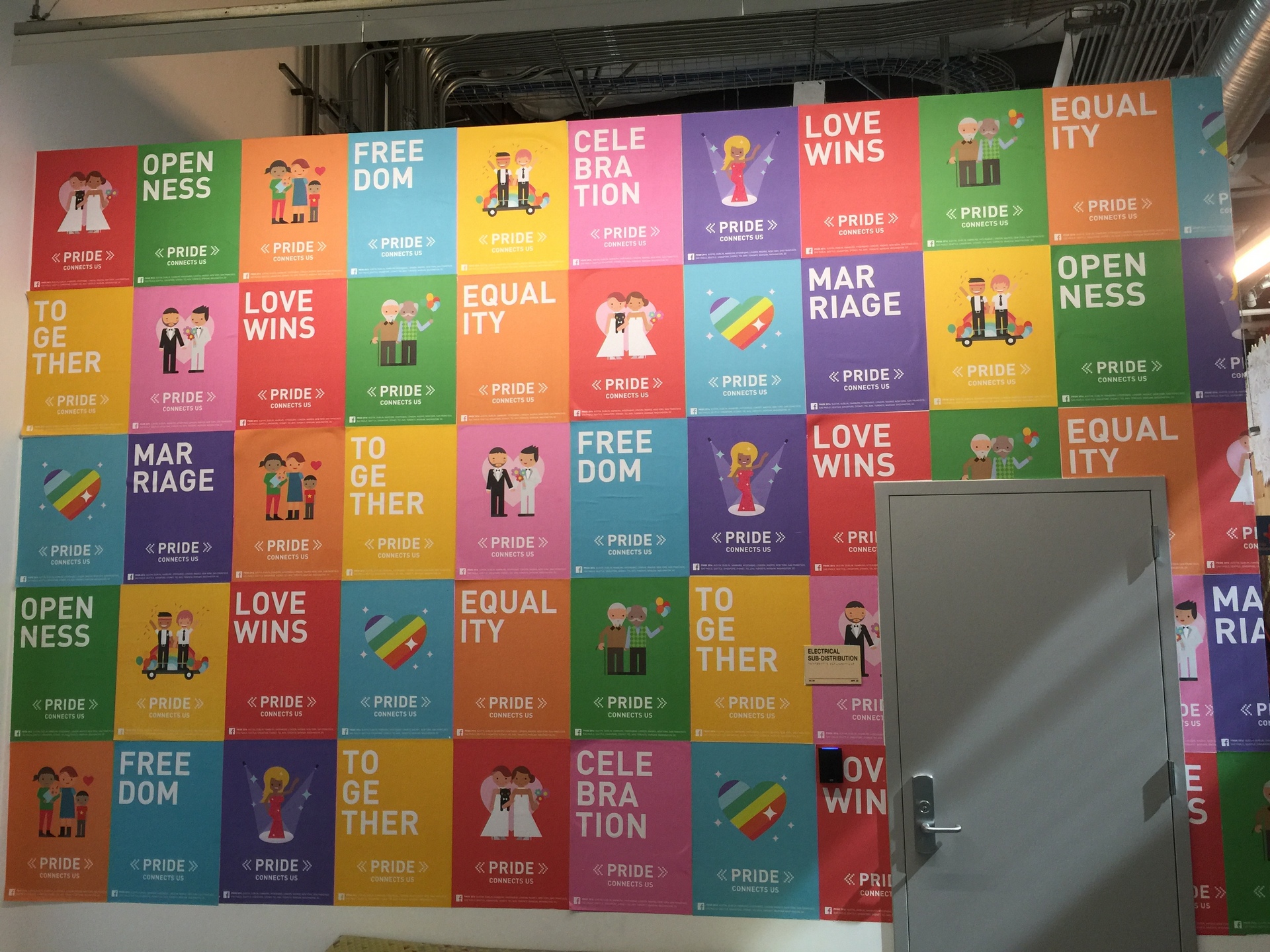
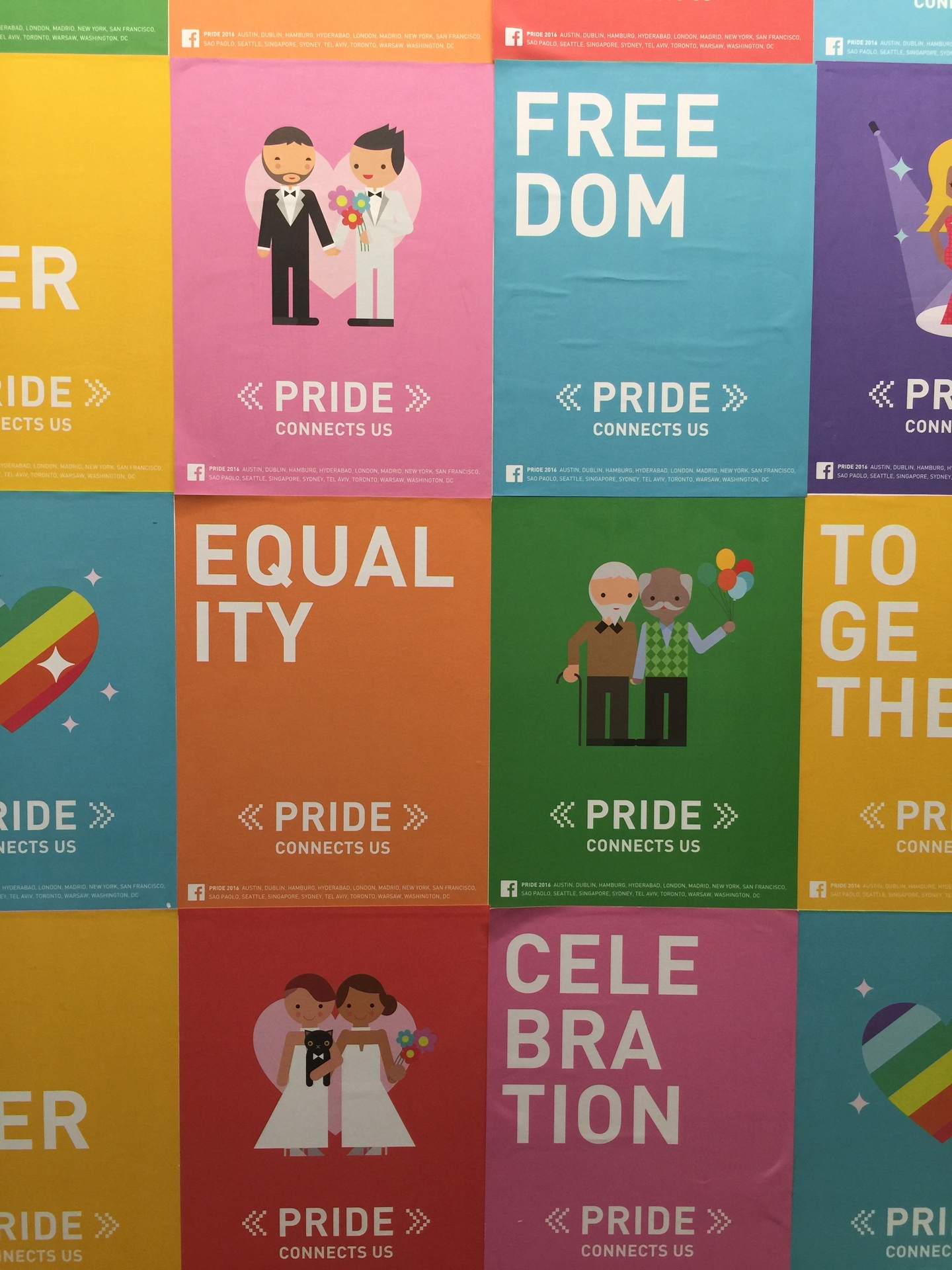
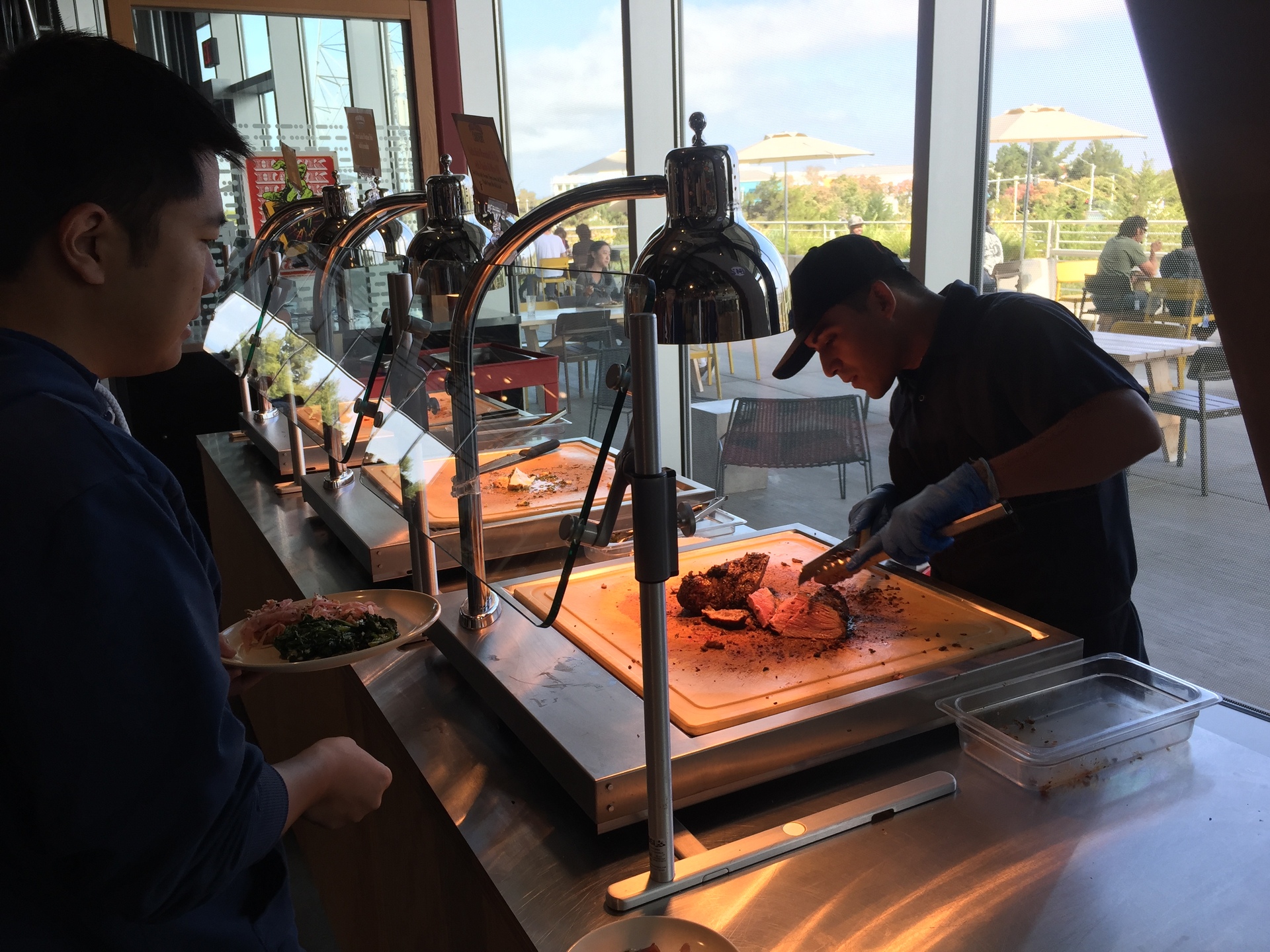
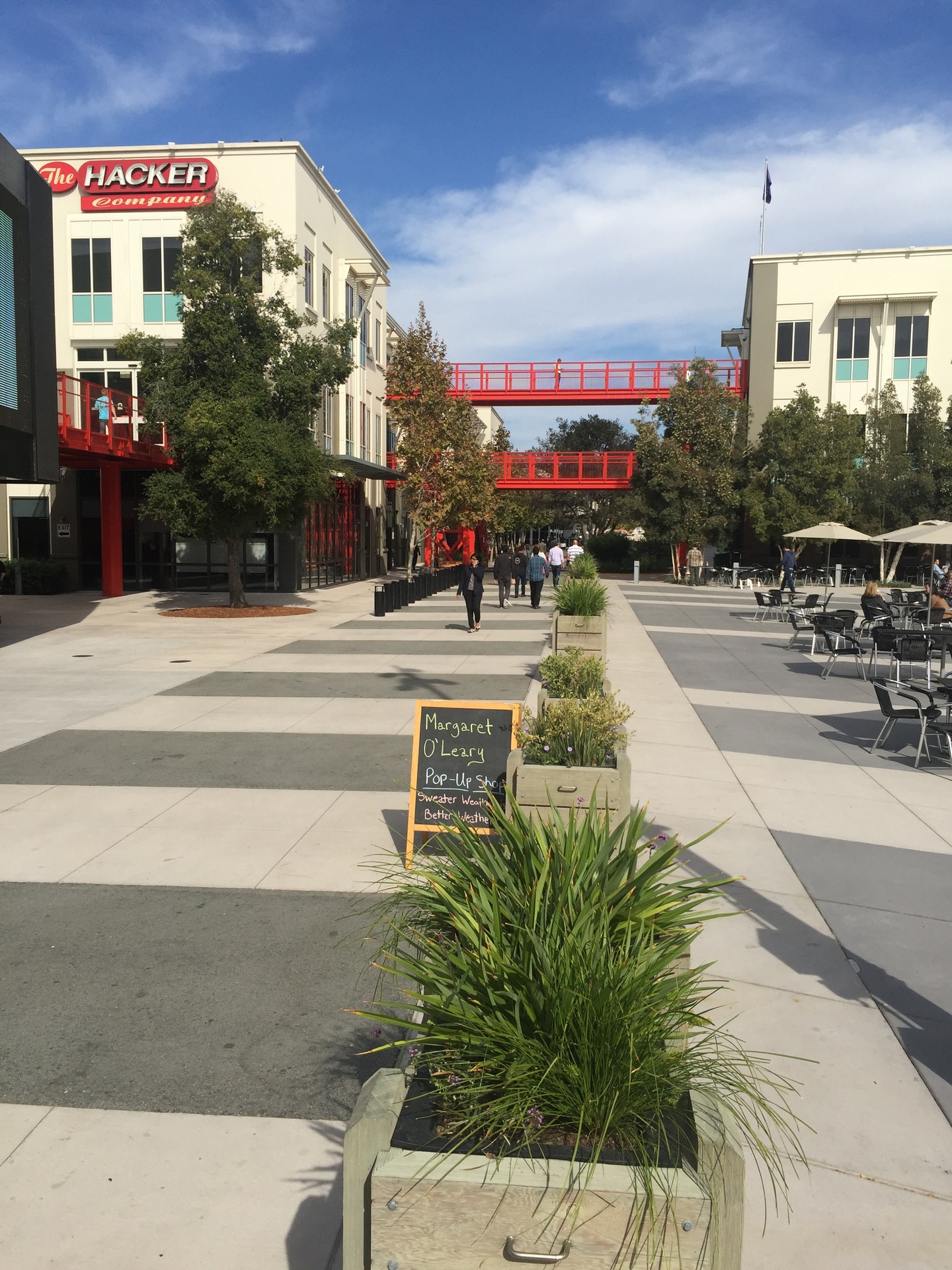
So what do FB coders actually work on all day? Maybe the ad platform has some complexity, but all the other functionality on the FB platform seems pretty simple. I read they wrote their own PHP compiler (despite several existing compilers) and wrote their own Javascript frameworks (really? for the simple FB UI?). What is in their ginormous 9.9M line code base? Maybe Facebook is like Wall St firms that have their coders continually re-write old apps with shiny new languages/frameworks just to keep the talent engaged?
Having worked in cubicle farms in the ’90s, I can say getting an office was a huge win. Without a door to close, other people’s phone calls and conversations become your distractions (see #8 on this list). This New Yorker article has a good summary for what a fail the open-pit approach is. And Doonesbury.
When I visited the Facebook campus a few years ago I was struck by the age bias. Everybody looked like they’d just walked out of the dorm. For this crew, spending 10-12 hours at work is not an issue, their workplace is likely much of their social life as well. Being at the office at emptier periods of time is not a problem.
Fast forward ten years, and this crew hits their mid 30s. Other family and social obligations reduces the time spent at work. All those distractions will start to really suck productivity then. What inevitably happens is instead of hanging at the office “collaborating”, people start working from home where they can focus, and take a phone call without scurrying off to an isolation pod. The open pit becomes a ghost town.
Part of the crowding is likely be due to real estate, even with pockets as deep as Facebook’s. Large tracts of open land to build a corporate campus don’t exist in the bay area, and putting up new buildings takes time. Even mighty Apple is still working on their donut, half a decade after announcing it. The not so funny joke is a company like Zynga is now worth less than their office building.
Everything exists for a reason – all those free snacks, the playground equipment, even the open pit where everyone can see when you come and go, is there to keep you there for as many of your waking hours as possible.
My daughter is at a federally funded lab and while her gross salary is less than Facebook rates, I’ll bet she is making more on an hourly basis because at 5:15 she is out of there like a shot to catch the last shuttle.
It’s like 1999 multiplied a few times, all private, all in 1 place, & concentrated in 3 companies. Had coworkers who left jobs because they got cubes instead of bullpens. If you get along, the bullpen works. If you don’t, it’s horrible. Spreading the desks apart seems to offer the best of both worlds, but takes more real estate than cubes.
Southern California engineering companies usually have 2 people sharing an office, with a door that closes. This was due to defense contractors I’m told. Depending on who your officemate is this can be good or bad, but usually orders of magnitude better than open-pit coding. I’ve done some of my best work in these shared offices. In Germany, the low employees, contractors and suppliers work from a large shared desk and supervisors have a smaller open desk facing the shared desk without any dividers (kind of like open-pit). I think the move to open-pit is to cut down on the faffing about. Even if someone is not using the company computer to surf the internet, they’re probably using their phone….
> ” Although I don’t recall seeing any black employees, “Black Lives Matter” posters are prominent and sometimes dominant. ”
It’s called “hypocrisy”.
Next question?
My first three jobs had individual offices, after that a shared office, then various forms of cubicles and towards the end semi-pits, where people sat side by side in rows of 5-10 people but at least had individual desks. That looked a bit like the first Wall Street movie, except we who worked there weren’t in sales. I’m now quasi-retired so I haven’t followed the latest office trends closely, but I did visit one friend whose workplace had been reorganized into long tables packed as close as possible, like in a uni computer lab. It seemed rather hellish, and as usual one wonders how much really gets done.
(I should note that it wasn’t noisy inside the Facebook offices and I saw very few people with headphones on.)
By the way, how were the executives seated?
Andy Grove famously had a cubicle, but I don’t think I’ve seen anyone follow his example in the flesh.
Open plan is fine with two caveats: 1) People keep quiet and scuttle off to the cafeteria or a meeting room for long conversations and phone calls and socializing. 2) The desk arrangements are such you don’t get people constantly walking around behind you. It triggers some primitive mammalian panic response.
Americans tend to be horrible about #1. In white collar settings most seem to want to spend about three hours a day yacking loudly about nothing rather than hurry up and get the work done so we can all leave.
I’d rather be in a good open plan office with some natural light and perhaps a window to look out than in a private windowless office.
isn’t google also doing this open office layout thing? I wonder if google and facebook just copy each other out of principle.